AMBOSELI NP
KENYA!
Amboseli Extension
Dates: November 9-13, 2023
Price: $3045
Kenya Photo Safari precedes Amboseli Extension
Dates: October 27- November 9, 2023
Price: $ 12995 based on ten participants
(single supplement $ TBA)
This is our 36th year doing Kenya Safaris
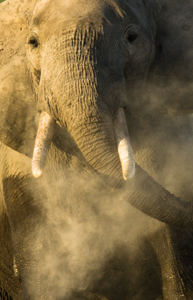
We are very excited to offer this optional extension to Amboseli National Park, perhaps the most exciting location for photographing African Elephants. Amboseli lies within sight of Africa's tallest mountain, Kilamanjaro, and a shot of a herd of elephants with Kilamanjaro looming in the background is truly one of Africa's iconic images.
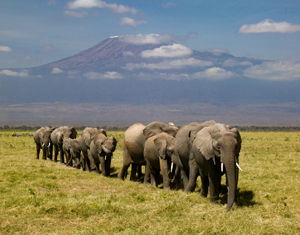
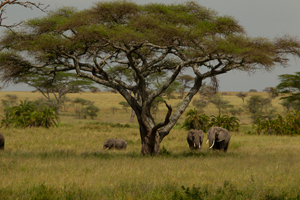
African Elephants will be our primary focus on this photo extension, as each day herds typically cross the dusty plains in long lines as they head towards the Amboseli marshes. Once in the marshes the elephants feed and play, and indulge in various behaviors, while our attention may be diverted from the elephants by the numerous birds found along the marshes.
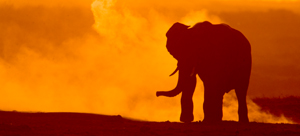
In addition to elephants, there are a variety of African mammals, with good populations of Spotted Hyenas, Cheetahs, Jackals, and Yellow Baboons. The bird life is particularly rich, especially around the marshes where kingfishers, herons, cranes, and an assortment of other birds are common.
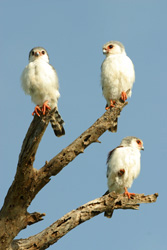

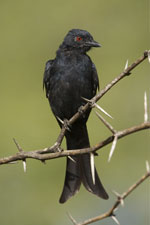
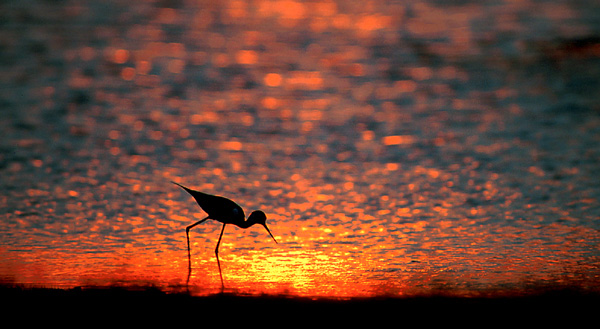
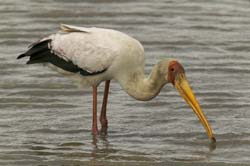
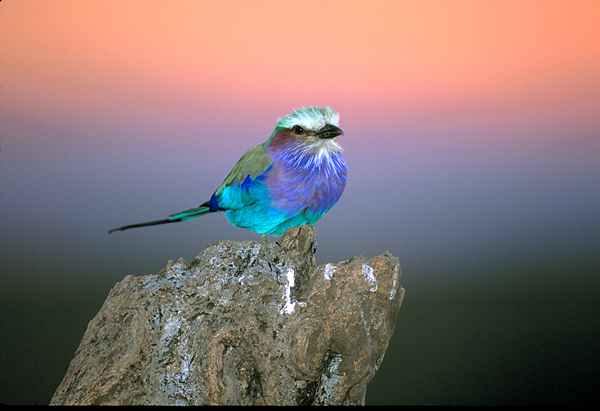
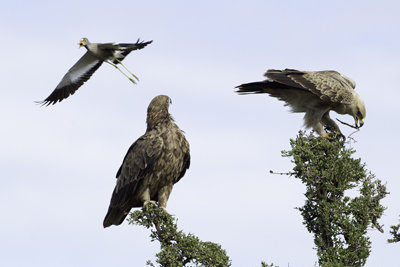

Why we are unique
Experience.
36 years leading safaris.
We know the wildlife and how best to utilize your time.
Our rotation system insures you will have the best experience possible.
You are getting two very experienced leaders for the price most tours have for only one leader, experienced or not.
An East African Photo Safari is the experience of a lifetime, but one that often becomes a nearly annual experience for many. We’ve been doing photo safaris for thirty-five years, and we not only know
what we’re doing photographically to deliver the best possible images you can make, but we also offer something few others can. We also provide the story, the natural history, the reasons why something happened, or why it may happen as we wait. We are photographers, of course, but we are also naturalists, biologists by training, and we take enormous pleasure in interpreting and making sense
of the behaviors you will see.
You can go on a safari with a photo leader and take pictures, but there is no other photo safari that will provide you with the information that explains what you are seeing, that gives meaning to
your photographs and to your experience. As our participants say, it is what truly
sets us apart from all the rest.
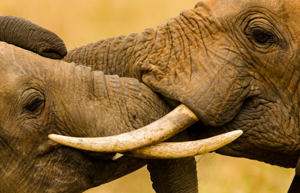
Our Photo Safari Highlights
Three Photographers per vehicle maximum
Photo Instruction and Guidance in the Field
Fair and Equal Rotation of Photographers
Quality Time and Patience - You will see all the species but
you will see and photograph behavior too.
The Short Rainy Season - Great skies, fewer tourists, sunny mornings, soft light in the PM
Our Interpretation and Expertise - You can rely on our knowledge and experience to help predict
behaviors and photo opportunities
Informal Lunch and Dinner Discussions on What You Saw and what it means
Driver-Guide Tip is included in the tour price
No American Photographers have more field experience
leading photo safaris to East Africa.

To get the absolute most out of these safaris, consider taking one of our
Complete Digital Nature Photo Courses in the summer at Hoot Hollow!
PLEASE NOTE - Prices listed are based upon 10 participants.
There will be a surcharge if the safari has fewer participants.
You can read all of our Kenya Trip Reports for even more information.
This will give you an excellent idea of what our trips are all about, what we see,
and perhaps most importantly, how successful these trips are!
Why do we offer trips in the Fall?
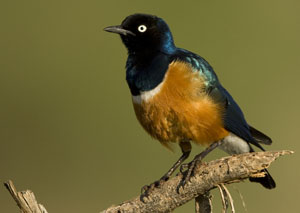 Our autumn trips usually coincide with the short rainy season - either in the middle of it, or catching either the front or back end. Why travel to Kenya if it's raining? Well, for one, the rains are short - typically they occur in the late afternoon, and they are scattered. It's entirely possible to do a game drive and have rain clouds visible at all four compass points, and yet be rainless. Rains are usually short, too, and rarely compromise a game drive. However, rains generate action! The skies in the afternoon are often magnificent, as thunderheads build up into dramatic skyscapes. Landscape images are far more interesting with a great sky. Rain induces bird nesting activity, and weavers, social weavers, and hornbills actively
Our autumn trips usually coincide with the short rainy season - either in the middle of it, or catching either the front or back end. Why travel to Kenya if it's raining? Well, for one, the rains are short - typically they occur in the late afternoon, and they are scattered. It's entirely possible to do a game drive and have rain clouds visible at all four compass points, and yet be rainless. Rains are usually short, too, and rarely compromise a game drive. However, rains generate action! The skies in the afternoon are often magnificent, as thunderheads build up into dramatic skyscapes. Landscape images are far more interesting with a great sky. Rain induces bird nesting activity, and weavers, social weavers, and hornbills actively
nest when mud or new grasses are available.
Typically, mornings begin cloud free and brilliant, with clouds building during the day. This provides photographers
with the opportunity to shoot subjects in two lighting conditions - in bright light in the AM, and, perhaps, overcast conditions in the afternoon. As one would expect, along the equator the heat builds up through the day and, on a cloudless day, it can get rather warm by late afternoon. Clouds cool things off, so nocturnal animals, like leopards,
are much more likely to be active on a cool day than on a hot, sunny afternoon. Another perk for this season!
Who Is This Safari For?
This safari is really for anyone who is serious, either about wildlife and nature photography, or about in-depth, intense, and patient animal viewing. The two, for a photographer, are the same, for patience, time, and luck are required in order to obtain great wildlife images. While almost everyone who travels with us are like-minded, there are, on occasion, one or two people who are not. This is not a safari for tourists. This is a safari for photographers - serious amateurs or photo enthusiasts or pros, and for those who really want to do a safari right.
Our Unique and Fair Rotation System
We do not assign people to one vehicle for the entire trip. Instead, we rotate everyone through our vehicles
so that everyone has a chance to shoot with each other (avoiding trip-damaging cliques) and to shoot with both
Mary and me. Our rotation system gives everyone equal time with Mary and with me, and as we 'captain' our
respective vans you can be assured that we'll do our best to put you in the best shooting situation as we read
the light, determine animal behavior, or just simply look after you for the shots you're seeking
but have not yet achieved.
Mary and I are here to work for you. I joke that when you're with me you'll get the best photos,
and Mary says the same thing. We are also the only safari operators who rotate our participants in a fair basis throughout all the vehicles so that you see and work with all the driver/guides, the other participants, and with Mary and I. Our rotation -- done for both morning and afternoon game drives -- insures that you see Mary and I an equal number of times, an equal number of times with the various driver/guides, and as diverse a rotation as can be accomplished in being with the other participants on the trip. In this way our groups become tightly knit into one big happy family.
What You Can Expect from Us
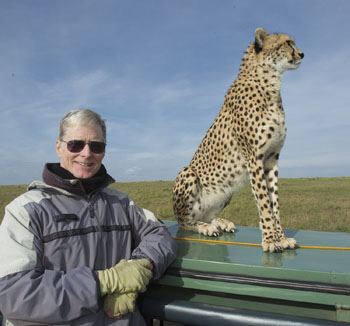 From Kenya you can expect the best, most exciting wildlife photography possible on this planet. We will prepare you photographically.
From Kenya you can expect the best, most exciting wildlife photography possible on this planet. We will prepare you photographically.
I've written a shooting guide to Kenya that you can use as a handbook
or reference when considering composition and exposure for most of
your shooting subjects. Prior to the trip we'll provide you with our own recommendations on the gear to bring and, on safari, we'll provide
thorough briefings on the subjects we expect to film and how to do so.
In the field you'll be with either Mary or myself on an average of two
out of every three game drives. That means you'll be under the guidance
of two experts here, as opposed to a tour with only one leader,
who may be a photographer and not a naturalist as well.
As I mentioned earlier, we'll do our best to get you the best shots possible, and we'll be able to provide you with our suggestions on composition and exposure and, perhaps most importantly, on what we expect to happen and where we should be. Knowing animal behavior is a real plus, if not a key to successful wildlife shooting, and our experience, and that of our fantastic Kenyan driver/guides, will insure we have the best chance at obtaining great images.
What's Included
The photo safari prices for our trips is based on land costs from Nairobi and includes all accommodations
(double occupancy), all meals except lunch in Nairobi, park entrance fees, and ground transportation,
including our exclusive three photographers per vehicles. A single rooming supplement is available.
See prices above.
Our Objective
You should return with the best photographs of wildlife you've ever taken. This doesn't come easily; it requires
early starts, patience, and a degree of luck. I believe any photographer traveling to Kenya wants this, and that
they're more interested in filming game than they are in lounging at a pool or in having a leisurely cooked breakfast
during the best shooting time of the day!
Our field days start before dawn so that we can greet the sunrise with our lenses.
We'll have modest boxed picnic breakfasts on most field days.
We will stay with a subject as long as it's necessary to get great photos, provided
the goal is realistic. Don't be afraid that by doing this
you'll miss other shots.
About Your Leaders
My wife Mary Ann and I strive to provide the most comfortable and
thorough safari you will experience. Both Mary and I are professional photographers, and I'd hope you've seen our credits. These included
National Geographic, National Wildlife, Ranger Rick, Natural History,
Living Bird, Birder's World, and most nature/wildlife calendars.
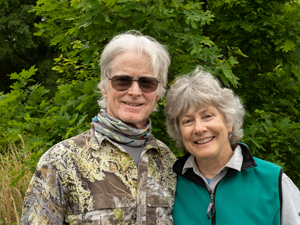 As a husband/wife team, Mary Ann and I have won more times in the
As a husband/wife team, Mary Ann and I have won more times in the
prestigious BBC Wildlife Photographer of the Year competition than any
one. To date we have had 15 firsts, seconds, or thirds -- and we have
not entered every year. Our trips are not about us, however, they are all
for you, but credentials seem to matter, and we have them.
Mary has written twenty-nine (29) children's books, including Leopards, Grizzly Bears, Woodpeckers,
Flying Squirrels, Sunflowers, Cobras, Jupiter, Boas, Garter Snakes, Pythons, Rattlesnakes, Ducks, Chickens, Horses, and Cows, and a coffee table book, Out of the Past, Amish Tradition and Faith.
I've written several how-to wildlife photography books -- A Practical Guide to Photographing American Wildlife,
The Wildlife Photographer's Field Manual, The Complete Guide to Wildlife Photography, Designing Wildlife
Photographs, Photographing on Safari, A Field Guide to Photographing in East Africa, and the New Complete
Guide to Wildlife Photography.
Natural history books include Big Cats in the Wild, Gorillas in the Wild, Penguins in the Wild, Polar Bears in the Wild,
African Wildlife, Creatures of the Night, The World's Deadliest, and several
ebooks. We have produced an instructional video, A Video Guide to Photographing on Safari with
Joe and Mary Ann McDonald.
We are both editors for Nature Photographer magazine and the Journal of Wildlife Photography.
In addition to leading our trips to Tanzania, Mary and I personally lead photo safaris to
Kenya, Brazil's Pantanal, Chile, Galapagos, Svalbard, India, Rwanda, Ecuador, Costa Rica,
the Falklands, South Texas, Yellowstone and some other spots, too!
Contact us by e-mail. at: info@hoothollow.com
Or Call (717) 543-6423
AMBOSELI NP
KENYA!
Amboseli Extension
Dates: November 9-13, 2023
Price: $3045
Kenya Photo Safari precedes Amboseli Extension
Dates: October 27- November 9, 2023
Price: $ 12995 based on ten participants
(single supplement $ TBA)
This is our 36th year doing Kenya Safaris

We are very excited to offer this optional extension to Amboseli National Park, perhaps the most exciting location for photographing African Elephants. Amboseli lies within sight of Africa's tallest mountain, Kilamanjaro, and a shot of a herd of elephants with Kilamanjaro looming in the background is truly one of Africa's iconic images.


African Elephants will be our primary focus on this photo extension, as each day herds typically cross the dusty plains in long lines as they head towards the Amboseli marshes. Once in the marshes the elephants feed and play, and indulge in various behaviors, while our attention may be diverted from the elephants by the numerous birds found along the marshes.

In addition to elephants, there are a variety of African mammals, with good populations of Spotted Hyenas, Cheetahs, Jackals, and Yellow Baboons. The bird life is particularly rich, especially around the marshes where kingfishers, herons, cranes, and an assortment of other birds are common.








Why we are unique
Experience.
36 years leading safaris.
We know the wildlife and how best to utilize your time.
Our rotation system insures you will have the best experience possible.
You are getting two very experienced leaders for the price most tours have for only one leader, experienced or not.
An East African Photo Safari is the experience of a lifetime, but one that often becomes a nearly annual experience for many. We’ve been doing photo safaris for thirty-five years, and we not only know
what we’re doing photographically to deliver the best possible images you can make, but we also offer something few others can. We also provide the story, the natural history, the reasons why something happened, or why it may happen as we wait. We are photographers, of course, but we are also naturalists, biologists by training, and we take enormous pleasure in interpreting and making sense
of the behaviors you will see.
You can go on a safari with a photo leader and take pictures, but there is no other photo safari that will provide you with the information that explains what you are seeing, that gives meaning to
your photographs and to your experience. As our participants say, it is what truly
sets us apart from all the rest.

Our Photo Safari Highlights
Three Photographers per vehicle maximum
Photo Instruction and Guidance in the Field
Fair and Equal Rotation of Photographers
Quality Time and Patience - You will see all the species but
you will see and photograph behavior too.
The Short Rainy Season - Great skies, fewer tourists, sunny mornings, soft light in the PM
Our Interpretation and Expertise - You can rely on our knowledge and experience to help predict
behaviors and photo opportunities
Informal Lunch and Dinner Discussions on What You Saw and what it means
Driver-Guide Tip is included in the tour price
No American Photographers have more field experience
leading photo safaris to East Africa.

To get the absolute most out of these safaris, consider taking one of our
Complete Digital Nature Photo Courses in the summer at Hoot Hollow!
PLEASE NOTE - Prices listed are based upon 10 participants.
There will be a surcharge if the safari has fewer participants.
You can read all of our Kenya Trip Reports for even more information.
This will give you an excellent idea of what our trips are all about, what we see,
and perhaps most importantly, how successful these trips are!
Why do we offer trips in the Fall?
 Our autumn trips usually coincide with the short rainy season - either in the middle of it, or catching either the front or back end. Why travel to Kenya if it's raining? Well, for one, the rains are short - typically they occur in the late afternoon, and they are scattered. It's entirely possible to do a game drive and have rain clouds visible at all four compass points, and yet be rainless. Rains are usually short, too, and rarely compromise a game drive. However, rains generate action! The skies in the afternoon are often magnificent, as thunderheads build up into dramatic skyscapes. Landscape images are far more interesting with a great sky. Rain induces bird nesting activity, and weavers, social weavers, and hornbills actively
Our autumn trips usually coincide with the short rainy season - either in the middle of it, or catching either the front or back end. Why travel to Kenya if it's raining? Well, for one, the rains are short - typically they occur in the late afternoon, and they are scattered. It's entirely possible to do a game drive and have rain clouds visible at all four compass points, and yet be rainless. Rains are usually short, too, and rarely compromise a game drive. However, rains generate action! The skies in the afternoon are often magnificent, as thunderheads build up into dramatic skyscapes. Landscape images are far more interesting with a great sky. Rain induces bird nesting activity, and weavers, social weavers, and hornbills actively
nest when mud or new grasses are available.
Typically, mornings begin cloud free and brilliant, with clouds building during the day. This provides photographers
with the opportunity to shoot subjects in two lighting conditions - in bright light in the AM, and, perhaps, overcast conditions in the afternoon. As one would expect, along the equator the heat builds up through the day and, on a cloudless day, it can get rather warm by late afternoon. Clouds cool things off, so nocturnal animals, like leopards,
are much more likely to be active on a cool day than on a hot, sunny afternoon. Another perk for this season!
Who Is This Safari For?
This safari is really for anyone who is serious, either about wildlife and nature photography, or about in-depth, intense, and patient animal viewing. The two, for a photographer, are the same, for patience, time, and luck are required in order to obtain great wildlife images. While almost everyone who travels with us are like-minded, there are, on occasion, one or two people who are not. This is not a safari for tourists. This is a safari for photographers - serious amateurs or photo enthusiasts or pros, and for those who really want to do a safari right.
Our Unique and Fair Rotation System
We do not assign people to one vehicle for the entire trip. Instead, we rotate everyone through our vehicles
so that everyone has a chance to shoot with each other (avoiding trip-damaging cliques) and to shoot with both
Mary and me. Our rotation system gives everyone equal time with Mary and with me, and as we 'captain' our
respective vans you can be assured that we'll do our best to put you in the best shooting situation as we read
the light, determine animal behavior, or just simply look after you for the shots you're seeking
but have not yet achieved.
Mary and I are here to work for you. I joke that when you're with me you'll get the best photos,
and Mary says the same thing. We are also the only safari operators who rotate our participants in a fair basis throughout all the vehicles so that you see and work with all the driver/guides, the other participants, and with Mary and I. Our rotation -- done for both morning and afternoon game drives -- insures that you see Mary and I an equal number of times, an equal number of times with the various driver/guides, and as diverse a rotation as can be accomplished in being with the other participants on the trip. In this way our groups become tightly knit into one big happy family.
What You Can Expect from Us
 From Kenya you can expect the best, most exciting wildlife photography possible on this planet. We will prepare you photographically.
From Kenya you can expect the best, most exciting wildlife photography possible on this planet. We will prepare you photographically.
I've written a shooting guide to Kenya that you can use as a handbook
or reference when considering composition and exposure for most of
your shooting subjects. Prior to the trip we'll provide you with our own recommendations on the gear to bring and, on safari, we'll provide
thorough briefings on the subjects we expect to film and how to do so.
In the field you'll be with either Mary or myself on an average of two
out of every three game drives. That means you'll be under the guidance
of two experts here, as opposed to a tour with only one leader,
who may be a photographer and not a naturalist as well.
As I mentioned earlier, we'll do our best to get you the best shots possible, and we'll be able to provide you with our suggestions on composition and exposure and, perhaps most importantly, on what we expect to happen and where we should be. Knowing animal behavior is a real plus, if not a key to successful wildlife shooting, and our experience, and that of our fantastic Kenyan driver/guides, will insure we have the best chance at obtaining great images.
What's Included
The photo safari prices for our trips is based on land costs from Nairobi and includes all accommodations
(double occupancy), all meals except lunch in Nairobi, park entrance fees, and ground transportation,
including our exclusive three photographers per vehicles. A single rooming supplement is available.
See prices above.
Our Objective
You should return with the best photographs of wildlife you've ever taken. This doesn't come easily; it requires
early starts, patience, and a degree of luck. I believe any photographer traveling to Kenya wants this, and that
they're more interested in filming game than they are in lounging at a pool or in having a leisurely cooked breakfast
during the best shooting time of the day!
Our field days start before dawn so that we can greet the sunrise with our lenses.
We'll have modest boxed picnic breakfasts on most field days.
We will stay with a subject as long as it's necessary to get great photos, provided
the goal is realistic. Don't be afraid that by doing this
you'll miss other shots.
About Your Leaders
My wife Mary Ann and I strive to provide the most comfortable and
thorough safari you will experience. Both Mary and I are professional photographers, and I'd hope you've seen our credits. These included
National Geographic, National Wildlife, Ranger Rick, Natural History,
Living Bird, Birder's World, and most nature/wildlife calendars.
 As a husband/wife team, Mary Ann and I have won more times in the
As a husband/wife team, Mary Ann and I have won more times in the
prestigious BBC Wildlife Photographer of the Year competition than any
one. To date we have had 15 firsts, seconds, or thirds -- and we have
not entered every year. Our trips are not about us, however, they are all
for you, but credentials seem to matter, and we have them.
Mary has written twenty-nine (29) children's books, including Leopards, Grizzly Bears, Woodpeckers,
Flying Squirrels, Sunflowers, Cobras, Jupiter, Boas, Garter Snakes, Pythons, Rattlesnakes, Ducks, Chickens, Horses, and Cows, and a coffee table book, Out of the Past, Amish Tradition and Faith.
I've written several how-to wildlife photography books -- A Practical Guide to Photographing American Wildlife,
The Wildlife Photographer's Field Manual, The Complete Guide to Wildlife Photography, Designing Wildlife
Photographs, Photographing on Safari, A Field Guide to Photographing in East Africa, and the New Complete
Guide to Wildlife Photography.
Natural history books include Big Cats in the Wild, Gorillas in the Wild, Penguins in the Wild, Polar Bears in the Wild,
African Wildlife, Creatures of the Night, The World's Deadliest, and several
ebooks. We have produced an instructional video, A Video Guide to Photographing on Safari with
Joe and Mary Ann McDonald.
We are both editors for Nature Photographer magazine and the Journal of Wildlife Photography.
In addition to leading our trips to Tanzania, Mary and I personally lead photo safaris to
Kenya, Brazil's Pantanal, Chile, Galapagos, Svalbard, India, Rwanda, Ecuador, Costa Rica,
the Falklands, South Texas, Yellowstone and some other spots, too!
Contact us by e-mail. at: info@hoothollow.com
Or Call (717) 543-6423
AMBOSELI NP
KENYA!
KENYA!
Amboseli Extension
Dates: November 9-13, 2023
Price: $3045
Kenya Photo Safari precedes Amboseli Extension
Dates: October 27- November 9, 2023
Price: $ 12995 based on ten participants
(single supplement $ TBA)
This is our 36th year doing Kenya Safaris

We are very excited to offer this optional extension to Amboseli National Park, perhaps the most exciting location for photographing African Elephants. Amboseli lies within sight of Africa's tallest mountain, Kilamanjaro, and a shot of a herd of elephants with Kilamanjaro looming in the background is truly one of Africa's iconic images.


African Elephants will be our primary focus on this photo extension, as each day herds typically cross the dusty plains in long lines as they head towards the Amboseli marshes. Once in the marshes the elephants feed and play, and indulge in various behaviors, while our attention may be diverted from the elephants by the numerous birds found along the marshes.

In addition to elephants, there are a variety of African mammals, with good populations of Spotted Hyenas, Cheetahs, Jackals, and Yellow Baboons. The bird life is particularly rich, especially around the marshes where kingfishers, herons, cranes, and an assortment of other birds are common.








Why we are unique
Experience.
36 years leading safaris.
We know the wildlife and how best to utilize your time.
Our rotation system insures you will have the best experience possible.
You are getting two very experienced leaders for the price most tours have for only one leader, experienced or not.
An East African Photo Safari is the experience of a lifetime, but one that often becomes a nearly annual experience for many. We’ve been doing photo safaris for thirty-five years, and we not only know
what we’re doing photographically to deliver the best possible images you can make, but we also offer something few others can. We also provide the story, the natural history, the reasons why something happened, or why it may happen as we wait. We are photographers, of course, but we are also naturalists, biologists by training, and we take enormous pleasure in interpreting and making sense
of the behaviors you will see.
You can go on a safari with a photo leader and take pictures, but there is no other photo safari that will provide you with the information that explains what you are seeing, that gives meaning to
your photographs and to your experience. As our participants say, it is what truly
sets us apart from all the rest.

Our Photo Safari Highlights
Three Photographers per vehicle maximum
Photo Instruction and Guidance in the Field
Fair and Equal Rotation of Photographers
Quality Time and Patience - You will see all the species but
you will see and photograph behavior too.
The Short Rainy Season - Great skies, fewer tourists, sunny mornings, soft light in the PM
Our Interpretation and Expertise - You can rely on our knowledge and experience to help predict
behaviors and photo opportunities
Informal Lunch and Dinner Discussions on What You Saw and what it means
Driver-Guide Tip is included in the tour price
No American Photographers have more field experience
leading photo safaris to East Africa.
Amboseli Extension
Dates: November 9-13, 2023
Price: $3045
Kenya Photo Safari precedes Amboseli Extension
Dates: October 27- November 9, 2023
Price: $ 12995 based on ten participants
(single supplement $ TBA)
This is our 36th year doing Kenya Safaris

We are very excited to offer this optional extension to Amboseli National Park, perhaps the most exciting location for photographing African Elephants. Amboseli lies within sight of Africa's tallest mountain, Kilamanjaro, and a shot of a herd of elephants with Kilamanjaro looming in the background is truly one of Africa's iconic images.


African Elephants will be our primary focus on this photo extension, as each day herds typically cross the dusty plains in long lines as they head towards the Amboseli marshes. Once in the marshes the elephants feed and play, and indulge in various behaviors, while our attention may be diverted from the elephants by the numerous birds found along the marshes.

In addition to elephants, there are a variety of African mammals, with good populations of Spotted Hyenas, Cheetahs, Jackals, and Yellow Baboons. The bird life is particularly rich, especially around the marshes where kingfishers, herons, cranes, and an assortment of other birds are common.








Why we are unique
Experience.
36 years leading safaris.
We know the wildlife and how best to utilize your time.
Our rotation system insures you will have the best experience possible.
You are getting two very experienced leaders for the price most tours have for only one leader, experienced or not.
An East African Photo Safari is the experience of a lifetime, but one that often becomes a nearly annual experience for many. We’ve been doing photo safaris for thirty-five years, and we not only know
what we’re doing photographically to deliver the best possible images you can make, but we also offer something few others can. We also provide the story, the natural history, the reasons why something happened, or why it may happen as we wait. We are photographers, of course, but we are also naturalists, biologists by training, and we take enormous pleasure in interpreting and making sense
of the behaviors you will see.
You can go on a safari with a photo leader and take pictures, but there is no other photo safari that will provide you with the information that explains what you are seeing, that gives meaning to
your photographs and to your experience. As our participants say, it is what truly
sets us apart from all the rest.

Our Photo Safari Highlights
Three Photographers per vehicle maximum
Photo Instruction and Guidance in the Field
Fair and Equal Rotation of Photographers
Quality Time and Patience - You will see all the species but
you will see and photograph behavior too.
The Short Rainy Season - Great skies, fewer tourists, sunny mornings, soft light in the PM
Our Interpretation and Expertise - You can rely on our knowledge and experience to help predict
behaviors and photo opportunities
Informal Lunch and Dinner Discussions on What You Saw and what it means
Driver-Guide Tip is included in the tour price
No American Photographers have more field experience
leading photo safaris to East Africa.

To get the absolute most out of these safaris, consider taking one of our
Complete Digital Nature Photo Courses in the summer at Hoot Hollow!
PLEASE NOTE - Prices listed are based upon 10 participants.
There will be a surcharge if the safari has fewer participants.
You can read all of our Kenya Trip Reports for even more information.
This will give you an excellent idea of what our trips are all about, what we see,
and perhaps most importantly, how successful these trips are!
Why do we offer trips in the Fall?
 Our autumn trips usually coincide with the short rainy season - either in the middle of it, or catching either the front or back end. Why travel to Kenya if it's raining? Well, for one, the rains are short - typically they occur in the late afternoon, and they are scattered. It's entirely possible to do a game drive and have rain clouds visible at all four compass points, and yet be rainless. Rains are usually short, too, and rarely compromise a game drive. However, rains generate action! The skies in the afternoon are often magnificent, as thunderheads build up into dramatic skyscapes. Landscape images are far more interesting with a great sky. Rain induces bird nesting activity, and weavers, social weavers, and hornbills actively
Our autumn trips usually coincide with the short rainy season - either in the middle of it, or catching either the front or back end. Why travel to Kenya if it's raining? Well, for one, the rains are short - typically they occur in the late afternoon, and they are scattered. It's entirely possible to do a game drive and have rain clouds visible at all four compass points, and yet be rainless. Rains are usually short, too, and rarely compromise a game drive. However, rains generate action! The skies in the afternoon are often magnificent, as thunderheads build up into dramatic skyscapes. Landscape images are far more interesting with a great sky. Rain induces bird nesting activity, and weavers, social weavers, and hornbills actively
nest when mud or new grasses are available.
Typically, mornings begin cloud free and brilliant, with clouds building during the day. This provides photographers
with the opportunity to shoot subjects in two lighting conditions - in bright light in the AM, and, perhaps, overcast conditions in the afternoon. As one would expect, along the equator the heat builds up through the day and, on a cloudless day, it can get rather warm by late afternoon. Clouds cool things off, so nocturnal animals, like leopards,
are much more likely to be active on a cool day than on a hot, sunny afternoon. Another perk for this season!
Who Is This Safari For?
This safari is really for anyone who is serious, either about wildlife and nature photography, or about in-depth, intense, and patient animal viewing. The two, for a photographer, are the same, for patience, time, and luck are required in order to obtain great wildlife images. While almost everyone who travels with us are like-minded, there are, on occasion, one or two people who are not. This is not a safari for tourists. This is a safari for photographers - serious amateurs or photo enthusiasts or pros, and for those who really want to do a safari right.
Our Unique and Fair Rotation System
We do not assign people to one vehicle for the entire trip. Instead, we rotate everyone through our vehicles
so that everyone has a chance to shoot with each other (avoiding trip-damaging cliques) and to shoot with both
Mary and me. Our rotation system gives everyone equal time with Mary and with me, and as we 'captain' our
respective vans you can be assured that we'll do our best to put you in the best shooting situation as we read
the light, determine animal behavior, or just simply look after you for the shots you're seeking
but have not yet achieved.
Mary and I are here to work for you. I joke that when you're with me you'll get the best photos,
and Mary says the same thing. We are also the only safari operators who rotate our participants in a fair basis throughout all the vehicles so that you see and work with all the driver/guides, the other participants, and with Mary and I. Our rotation -- done for both morning and afternoon game drives -- insures that you see Mary and I an equal number of times, an equal number of times with the various driver/guides, and as diverse a rotation as can be accomplished in being with the other participants on the trip. In this way our groups become tightly knit into one big happy family.
 From Kenya you can expect the best, most exciting wildlife photography possible on this planet. We will prepare you photographically.
From Kenya you can expect the best, most exciting wildlife photography possible on this planet. We will prepare you photographically.
I've written a shooting guide to Kenya that you can use as a handbook
or reference when considering composition and exposure for most of
your shooting subjects. Prior to the trip we'll provide you with our own recommendations on the gear to bring and, on safari, we'll provide
thorough briefings on the subjects we expect to film and how to do so.
In the field you'll be with either Mary or myself on an average of two
out of every three game drives. That means you'll be under the guidance
of two experts here, as opposed to a tour with only one leader,
who may be a photographer and not a naturalist as well.
As I mentioned earlier, we'll do our best to get you the best shots possible, and we'll be able to provide you with our suggestions on composition and exposure and, perhaps most importantly, on what we expect to happen and where we should be. Knowing animal behavior is a real plus, if not a key to successful wildlife shooting, and our experience, and that of our fantastic Kenyan driver/guides, will insure we have the best chance at obtaining great images.
What's Included
The photo safari prices for our trips is based on land costs from Nairobi and includes all accommodations
(double occupancy), all meals except lunch in Nairobi, park entrance fees, and ground transportation,
including our exclusive three photographers per vehicles. A single rooming supplement is available.
See prices above.
Our Objective
You should return with the best photographs of wildlife you've ever taken. This doesn't come easily; it requires
early starts, patience, and a degree of luck. I believe any photographer traveling to Kenya wants this, and that
they're more interested in filming game than they are in lounging at a pool or in having a leisurely cooked breakfast
during the best shooting time of the day!
Our field days start before dawn so that we can greet the sunrise with our lenses.
We'll have modest boxed picnic breakfasts on most field days.
We will stay with a subject as long as it's necessary to get great photos, provided
the goal is realistic. Don't be afraid that by doing this
you'll miss other shots.
About Your Leaders
My wife Mary Ann and I strive to provide the most comfortable and
thorough safari you will experience. Both Mary and I are professional photographers, and I'd hope you've seen our credits. These included
National Geographic, National Wildlife, Ranger Rick, Natural History,
Living Bird, Birder's World, and most nature/wildlife calendars.
 As a husband/wife team, Mary Ann and I have won more times in the
As a husband/wife team, Mary Ann and I have won more times in the
prestigious BBC Wildlife Photographer of the Year competition than any
one. To date we have had 15 firsts, seconds, or thirds -- and we have
not entered every year. Our trips are not about us, however, they are all
for you, but credentials seem to matter, and we have them.
Mary has written twenty-nine (29) children's books, including Leopards, Grizzly Bears, Woodpeckers,
Flying Squirrels, Sunflowers, Cobras, Jupiter, Boas, Garter Snakes, Pythons, Rattlesnakes, Ducks, Chickens, Horses, and Cows, and a coffee table book, Out of the Past, Amish Tradition and Faith.
I've written several how-to wildlife photography books -- A Practical Guide to Photographing American Wildlife,
The Wildlife Photographer's Field Manual, The Complete Guide to Wildlife Photography, Designing Wildlife
Photographs, Photographing on Safari, A Field Guide to Photographing in East Africa, and the New Complete
Guide to Wildlife Photography.
Natural history books include Big Cats in the Wild, Gorillas in the Wild, Penguins in the Wild, Polar Bears in the Wild,
African Wildlife, Creatures of the Night, The World's Deadliest, and several
ebooks. We have produced an instructional video, A Video Guide to Photographing on Safari with
Joe and Mary Ann McDonald.
We are both editors for Nature Photographer magazine and the Journal of Wildlife Photography.
In addition to leading our trips to Tanzania, Mary and I personally lead photo safaris to
Kenya, Brazil's Pantanal, Chile, Galapagos, Svalbard, India, Rwanda, Ecuador, Costa Rica,
the Falklands, South Texas, Yellowstone and some other spots, too!
Contact us by e-mail. at: info@hoothollow.com
Or Call (717) 543-6423


